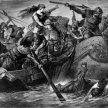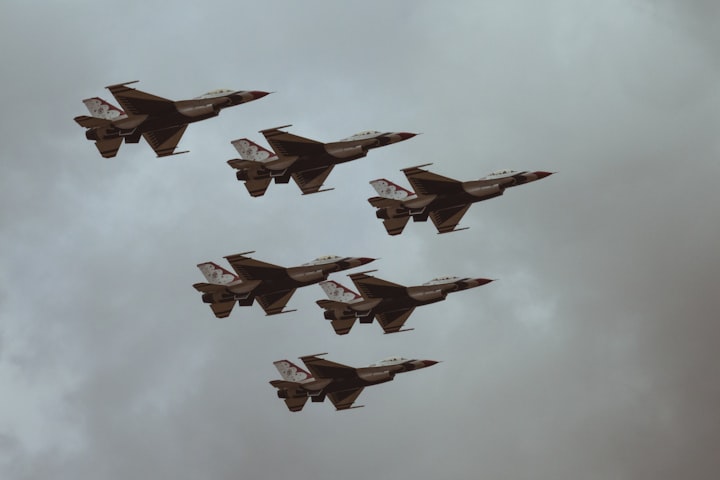The Ghost of the Lion of Panjshir
The Past and Future Struggle against the Taliban

Tens of thousands dead and trillions of dollars spent in a twenty year struggle in Afghanistan, yet in the end the patient Taliban endured and have ultimately regained control of the country, renaming it the Islamic Emirate of Afghanistan. Yet despite the withdrawal of the United States and its allies, one spot of opposition to the Taliban remains. The Panjshir Valley has once again risen up in resistance.
To understand exactly what this means, we need to go back more than four decades to another war in Afghanistan. The Soviet-Afghan War began in 1979 following a coup that brought the communist party of Afghanistan to power, renaming the state the Democratic Republic of Afghanistan. Some of the new leaderships first acts were a series of radical land reforms and modernization efforts that became deeply unpopular in the country. When the government began to face outright resistance to their governance, they acted to suppress opposition and executed thousands of political prisoners. By April of 1979 a wide expanse of the country was in open rebellion to their rule.
Fearing that the leadership of the Democratic Republic would turn to the United States for assistance, the leadership of the Soviet Union launched a reconstituted 40th Army across the borders to stage a coup to bring a new Soviet loyalist to power. What would follow these actions would be a Soviet occupation of the cities and main routes of communication, while Mujahideen guerrillas would operate in roughly 80% of the country, constantly resisting the invaders for years. Perhaps the most important leader in this struggle was Ahmad Shah Massoud, called the Lion of Panjshir.
Following the Soviet invasion, Massoud acted to start an insurrection in the Panjshir, and ultimately took full control of it to kick out the Afghan communist troops. After these initial successes, Massoud pursued a strategic plan for the expelling of the Soviet forces and to overthrow the communist regime they supported. This plan would call for a popular resistance force supported by the general population, an active defense of his stronghold in the Panjshir valley, constant asymmetric guerrilla warfare, and the eventual expansion of resistance to the entire country from the north.
The Soviets launched many offenses against Massoud’s forces over the duration of their occupation. Major combat units numbering in the tens of thousands would eventually see Massoud withdrawing his troops into the subsidiary valleys of the Panjshir where they had been heavily fortified. Attempts by the Soviets to break his forces once and for all saw their units fall prey to ambush after ambush. Eventually Afghan army garrisons would take over these Soviet positions, with the result that Massoud would gradually attack and reclaim them one by one.
Over the course of his resistance, Massoud would implement an effective military organization that operated in line with what he had learned of modern guerrilla warfare through studying the works of Che Guevara and Mao Zedong. He would enforce law and order in the areas he and his forces controlled, and helped organize the overall resistance to the Soviet Occupation. It would in large part be the efforts of Massoud that would contribute to the defeat and complete withdrawal of the Soviet forces on February 15, 1989, though it wouldn’t be until 1992, after the collapse of the Soviet Union, that the Democratic Republic government would crumble. Though the Kabul interim authority invited Massoud to enter the city as the new Head of State, he held back and ultimately decided to encourage a political settlement that would be acceptable to all the involved sides.
Unfortunately, peace would not result. Infighting between the victorious parties quickly began, and for years afterwards the various sides would struggle over the future of Kabul and the country itself. In would be during this timeframe that the Taliban would emerge as a major force in the southern part of the country. By 1994 they held power in several provinces in south and central Afghanistan. Though an internal peace process would be pursued by Massoud and the other major players in Kabul, which would be successfully expanded to all but the Taliban in February of 1996, it would be too late to prevent what was coming.
With massive support from abroad and an influx of new fighters from Pakistan, the Taliban would launch an offensive of their own, going on to seize control of Kabul and forcing Massoud’s forces to retreat to northeast Afghanistan. For the next five years, until the invasion led by the United States, Massoud’s Northern Alliance would prove to be the only effective resistance of total Taliban rule of Afghanistan. Under the Lion of Panjshir, the areas he controlled while resisting the Taliban saw democratic institutions implemented and freedoms protected that had no place in the rest of the country. Women in particular were granted gender equality in the face of the law as well as rights to participate in politics, education, and work. He saw education as particularly important for the future of the country and his people. In short, he, his beliefs, and his policies were a paramount threat to the Taliban and what they stood for.
Sadly he would not live to see the Taliban government overthrown, as he was assassinated in September 2001, just days before the 9/11 attacks.
With the fall of Kabul and the return of the Taliban, the Panjshir Valley has again risen against them. The Second Resistance, as it has become known, is led by the son of the Lion of Panjshir, Ahmad Massoud, and former Afghan government officials Amrullah Saleh and Bismillah Khan Mohammadi. As it currently stands, they are the only organized resistance against the rule of the Taliban. They are outnumbered and outmatched by Taliban forces that likely now have western-made military weapons and equipment. Yet similar forces in Panjshir were outmatched by the might of the Soviet army once as well. Ultimately, their prospects will depend on their ability to maintain a secure hold over Panjshir and the extent others outside the province will throw in their support. At least in the short term, the struggle for the future of Afghanistan will continue.
About the Creator
Charles Beuck
Avid reader and writer of all things fantasy, sci-fi, and history. Lucky husband and proud dog dad trying to make the author gig work in my free time. BA in Psychology, and MA/PhD in Political Science, sometimes exert influence on my work.






Comments
There are no comments for this story
Be the first to respond and start the conversation.